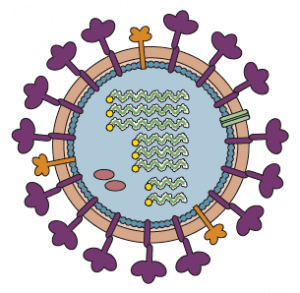

The authors used intranasal infection of mice with the WSN strain of influenza virus that had been modified to produce CD8 and CD4 T cell receptor epitopes from another virus, lymphocytic choriomeningitis virus. The inclusion of these sequences allowed the authors to measure virus-specific T cells in the infected animals. The effect of the sphinogosine analog AAL-R was then determined. This compound was selected because it had been shown previously to reduce virus-specific T cell accumulation in the lung. When administered in the respiratory tract, AAL-R reduced the anti-influenza virus T cell response and the release of cytokines and chemokines. Infiltration of macrophages and polymorphonuclear leukocytes into the lung was inhibited, and lung injury decreased. However, the drug did not increase the replication of virus in the lungs, and anti-viral antibody levels were unaffected. These effects were observed even when AAL-R was given 4 days after virus infection. Finally, the authors show that the drug acts by reducing the levels of major histocompatibility class I and II molecules, and the co-stimulatory B7-2 molecule, from dendritic cells in the lung and draining lymph nodes. The result is a reduction in the number of virus-specific T cells in the lung.
The studies reported here provide a better understanding of influenza virus induced injury of the lung. It may also be possible to use sphingosine analogs to decrease lung injury in human influenza infections, a possibility that the authors are exploring. Such compounds might be especially effective when used together with antiviral drugs such as Tamiflu and Relenza. This combination therapy approach would have the dual benefit of reducing viral loads and suppressing lung damage.
D. Marsolais, B. Hahm, K. B. Walsh, K. H. Edelmann, D. McGavern, Y. Hatta, Y. Kawaoka, H. Rosen, M. B. A. Oldstone (2009). A critical role for the sphingosine analog AAL-R in dampening the cytokine response during influenza virus infection Proceedings of the National Academy of Sciences DOI: 10.1073/pnas.0812689106

can I get the synthetic steps mechanism???
can I get the synthetic steps mechanism???